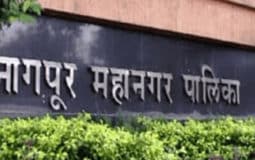Nagpur: There’s no denying the vast differences between Mumbai and Nagpur, and it seems that the Maharashtra Government is intent on maintaining this divide. While the disparity in per capita income between the two cities is well-known, what remains less publicized is that Nagpur residents are paying significantly more for electricity than their more affluent counterparts in Mumbai, a report in a local newspaper said.
It might come as a surprise, but electricity is cheaper in Mumbai, the State Capital, compared to what the Maharashtra State Electricity Distribution Company (MSEDCL) charges consumers in Nagpur, the Second Capita. This discrepancy is especially jarring given the stark differences in purchasing power between the residents of Nagpur and those in Mumbai. It appears that the people of Vidarbha, including Nagpur, are subsidizing the electricity supplied to Mumbai’s metropolis, the report stated.
In Mumbai, consumers benefit from electricity supplied by private companies such as BEST and Adani. In contrast, residents of Nagpur and the rest of Maharashtra have no option but to rely on the state-run MSEDCL. Ironically, MSEDCL’s power tariffs are among the highest in the country, a distinction they have consistently maintained for years.
The bitter irony:
The report further said that what makes this situation particularly frustrating for Nagpurians is that a significant portion of the electricity consumed in Maharashtra, including Nagpur, is generated in Vidarbha. Despite this, residents here are forced to pay some of the highest tariffs in the State. For instance, as of August 9, Mumbai’s demand stood at 2,884 MW, but Nagpur’s local generation was just 1,469 MW, leaving a deficit of 1,215 MW that had to be sourced from other regions.
In stark contrast, Nagpur district alone has an installed power generation capacity of 3,530 MW, while the city’s consumption has never exceeded 1,000 MW. Given the lower transmission losses due to proximity, it would be logical for Nagpur and Vidarbha residents to receive power at concessional rates. However, logic seems to work differently in Maharashtra.
Comparing tariffs: Nagpur pays more:
Despite the longer distances involved in supplying power to Mumbai, consumers there enjoy lower tariffs compared to those in Nagpur. For residential consumption in the highest bracket — 1,000 units and above — MSEDCL charges Nagpur consumers a steep Rs 17.79 per unit. Meanwhile, in Mumbai, BEST charges Rs 13.70 per unit, and Adani offers the lowest rate at just Rs 10.75 per unit.
Pratap Hogade, well known energy expert, offered further insight saying each of the companies is driven by its operational expenses, total profit and loss elements that determines final tariff. He sarcastically stated that MSEDCL is proud to be number 1 in power tariff in the country and is unwilling to even offer relief to industry fearing the same would push up industrialisation in the State.
A mere Rs 2/unit lowering of tariff at the most would cost Rs 5,000 to Rs 6,000 crore dent to MSEDCL revenue but the same can boost industry capacity five times and State can recover the same through GST that could be to the tune of Rs five lakh crore. Plus this would create employment opportunities but State leaders do not want to risk their political career for such drastic change.
Further, MSEDCL has highest transmission and distribution losses and that complicates the matter as this has direct bearing on final power tariff. The problem has increased from 2010-11 onwards and Hogade said despite numerous representation, the political establishment is not in mood to provide respite to people of Maharashtra.
A need for equitable power pricing:
The wide disparity in power tariffs between Mumbai and Nagpur raises questions about fairness and equity in Maharashtra’s electricity distribution. While Mumbai enjoys the benefits of lower tariffs, Nagpurians are left shouldering the burden, despite their region’s significant contribution to the State’s power generation. This situation calls for a re-evaluation of power pricing in Maharashtra, ensuring that all citizens benefit fairly from the state’s resources.

















